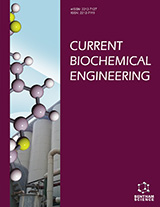Abstract
Artificial separation membranes, as selective mass transport barriers allow different gases to permeate at different rates. Many polymers exhibit great differences in the permeation rates and polymers, often in the form of non-porous films, constitute the group of the most important materials for gas separation membranes. Feasibility and efficiency of membrane technology – besides material selection – significantly depend on the separation circumstances such as feed composition, pressures and flows. All these aspects are discussed in this study. Polymeric membranes are very suitable for hydrogen recovery from biohydrogen. They can be employed under similar conditions of biohydrogen formation. Commercial membranes and apparatus can be utilized. Some biohydrogen components – such as nitrogen – can be removed easily, while others – e.g. carbon dioxide, moisture and hydrogen sulfide – likely require multi-stage or cascade processes to be separated. In the recent decade, a range of new polymers, new membrane materials, novel membrane processes were developed and have been proven in the laboratory scale. They brought higher separation efficiency with better economy. Process utilizing polymer foams with closed pores combine membrane based separation and hydrogen absorption capacity. Ionic liquid supported membranes utilize ionic liquids filled in the pores of polymer membranes and take advantage of ionic liquids separation abilities. Integrated solutions seem most feasible for biohydrogen purification and storage.
Keywords: Biohydrogen, hydrogen, membrane, separation, storage.
Graphical Abstract
 103
103
















